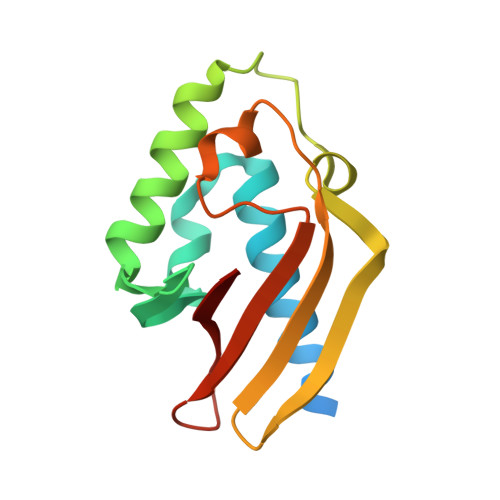A unique borrelial protein facilitates microbial immune evasion.
Foor, S.D., Brangulis, K., Shakya, A.K., Rana, V.S., Bista, S., Kitsou, C., Ronzetti, M., Alreja, A.B., Linden, S.B., Altieri, A.S., Baljinnyam, B., Akopjana, I., Nelson, D.C., Simeonov, A., Herzberg, O., Caimano, M.J., Pal, U.(2023) mBio 14: e0213523-e0213523
- PubMed: 37830812
- DOI: https://doi.org/10.1128/mbio.02135-23
- Primary Citation of Related Structures:
8P32, 8P33, 8SOT - PubMed Abstract:
Lyme disease is a major tick-borne infection caused by a bacterial pathogen called Borrelia burgdorferi , which is transmitted by ticks and affects hundreds of thousands of people every year. These bacterial pathogens are distinct from other genera of microbes because of their distinct features and ability to transmit a multi-system infection to a range of vertebrates, including humans. Progress in understanding the infection biology of Lyme disease, and thus advancements towards its prevention, are hindered by an incomplete understanding of the microbiology of B. burgdorferi , partly due to the occurrence of many unique borrelial proteins that are structurally unrelated to proteins of known functions yet are indispensable for pathogen survival. We herein report the use of diverse technologies to examine the structure and function of a unique B. burgdorferi protein, annotated as BB0238-an essential virulence determinant. We show that the protein is structurally organized into two distinct domains, is involved in multiplex protein-protein interactions, and facilitates tick-to-mouse pathogen transmission by aiding microbial evasion of early host cellular immunity. We believe that our findings will further enrich our understanding of the microbiology of B. burgdorferi, potentially impacting the future development of novel prevention strategies against a widespread tick-transmitted infection.
- Department of Veterinary Medicine, University of Maryland , College Park, Maryland, USA.
Organizational Affiliation:
















